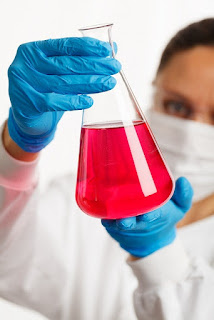 |
Recently, several studies have suggested an association between PFAS exposure and hypertension. There is also emerging evidence that PFAS exposure may be associated with other adverse health effects, including developmental and reproductive toxicity, immune system dysfunction, and cancer.
One study examined the relationship between PFAS exposure and hypertension in a large population of adults in the United States. The study found that individuals with higher levels of PFAS in their blood had a significantly higher risk of developing hypertension than those with lower levels of PFAS. Specifically, the study found that for each doubling of PFAS levels, the odds of developing hypertension increased by approximately 30%.
Another study examined the relationship between PFAS exposure and blood pressure in children and adolescents. The study found that children with higher levels of PFAS in their blood had higher systolic blood pressure (the top number in a blood pressure reading) than those with lower levels of PFAS. The study also found that the association between PFAS and systolic blood pressure was stronger in overweight or obese children.
A study that recently concluded showed a 70% increased risk of hypertension in middle aged women exposed regularly to PFAS materials.
Animal studies have also provided evidence of the link between PFAS exposure and hypertension. For example, a study published in 2018 found that rats exposed to PFAS had higher blood pressure levels than control rats.
It's important to note that while the studies suggest an association between PFAS exposure and hypertension, they do not prove causality. Other factors, such as diet, physical activity, and genetics, can also contribute to the development of hypertension. Furthermore, the studies were conducted in populations with different levels of PFAS exposure and may not be generalizable to other populations.
Mechanisms by Which PFAS May Increase Blood Pressure
The exact mechanisms by which PFAS may increase blood pressure are not fully understood, but several potential pathways have been proposed. For example:
- PFAS can interfere with the function of the thyroid gland by disrupting the normal production and regulation of thyroid hormones. In particular, PFAS have been shown to interfere with the production of thyroid-stimulating hormone (TSH), which is produced by the pituitary gland and regulates the thyroid gland.
It is thought that PFAS may interfere with the normal function of proteins that are involved in thyroid hormone production and regulation. - Disruption of the Renin-Angiotensin System: The renin-angiotensin system (RAS) is a hormone system that regulates blood pressure. PFAS may interfere with this system by affecting the levels of renin and angiotensin in the body.
- Oxidative Stress: PFAS exposure may cause oxidative stress, which can damage blood vessels and increase blood pressure.
- Inflammation: PFAS exposure may cause inflammation in the body, which can contribute to hypertension.
- Endocrine Disruption: PFAS are known to disrupt the endocrine system, which can lead to hormonal imbalances that affect blood pressure.
- Disruption of Nitric Oxide Production: Nitric oxide is a molecule that helps to regulate blood pressure by relaxing blood vessels. PFAS may interfere with the production of nitric oxide, leading to increased blood pressure.
Additionally, research has demonstrated that exposure to PFAS in utero can decrease the number of nephrons present at birth. Considering how prevalent PFAS are and have been for some time now, it's likely people are now being exposed to PFAS their entire lives, even before birth. This reduction of nephrons may lead to increased activity in the remaining nephrons, causing pressure natriuresis and resulting in elevated blood pressure. (Natriuresis is the excretion of sodium (salt) in urine by the kidneys.)
Limiting Exposure to PFAS
Given the potential health risks associated with exposure to PFAS, it's advisable to limit exposure as much as possible. Here are some ways to reduce your exposure to PFAS:
- Avoid stain-resistant fabrics: Stain-resistant fabrics can also contain PFAS, so it's best to avoid them.
- Choose natural fibers: When shopping for clothing and textiles, choose items made from natural fibers such as cotton, wool, or silk. Synthetic materials like polyester and nylon can be treated with PFAS to make them more stain-resistant.
- Reduce consumption of fast food: Fast food wrappers, containers, and boxes are often treated with PFAS to resist grease and oil. Reducing your consumption of fast food can help reduce your exposure to PFAS.
- Drink clean water from a trusted source. PFAS have been found in some drinking water supplies, so it's important to be aware of the quality of your water. You can also use a water filter, which has been shown to be effective at removing PFAS.
- Avoid eating fish that may be contaminated with PFAS, such as certain types of seafood from polluted waters.
- Follow proper disposal procedures for products that contain PFAS, such as by recycling or disposing of them at designated facilities.
- Avoid using non-stick cookware: Non-stick cookware can release PFAS when heated, so it's best to use alternatives such as stainless steel or cast iron.
- Avoid products containing firefighting foam: Firefighting foam contains PFAS, so avoid using products that contain it, such as fire extinguishers and smoke alarms.
- Be cautious with personal care products: PFAS can also be found in some personal care products, such as dental floss and some cosmetics. Look for products that are labeled as PFAS-free.
- Be mindful of food packaging: Some food packaging, such as microwave popcorn bags and fast-food wrappers, contain PFAS. Avoid using these products when possible.
- Minimize use of stain and water repellent products: Stain and water repellent products, such as Scotchgard, often contain PFAS. Minimize your use of these products or look for PFAS-free alternatives.
PFAS exposure treatments?
There are no known 'treatments' or detoxes for PFAS exposure. However there are new studies coming out that show that blood and plasma donation can help to lower serum PFAS levels.
